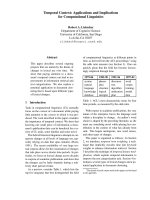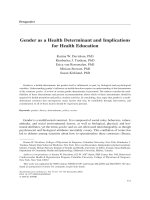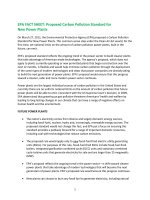Inductors and Transformers for Power Electronics pot
Bạn đang xem bản rút gọn của tài liệu. Xem và tải ngay bản đầy đủ của tài liệu tại đây (38.32 MB, 456 trang )
DK4141_half 1/20/05 4:56 PM Page 1
Inductors and
Transformers
for Power
Electronics
Copyright 2005 by Taylor & Francis Group, LLC
DK4141_title 1/20/05 4:55 PM Page 1
Inductors and
Transformers
for Power
Electronics
Alex Van den Bossche
Ghent University
Gent, Belgium
Vencislav Cekov Valchev
Ghent University
Gent, Belgium
Boca Raton London New York Singapore
A CRC title, part of the Taylor & Francis imprint, a member of the
Taylor & Francis Group, the academic division of T&F Informa plc.
Copyright 2005 by Taylor & Francis Group, LLC
The authors try to be accurate and clear, but they cannot guarantee the results or possible interpretations, which
might cause direct or indirect injuries, equipment damage, or economic damage by the use of the contents of
the book.
Published in 2005 by
CRC Press
Taylor & Francis Group
6000 Broken Sound Parkway NW, Suite 300
Boca Raton, FL 33487-2742
© 2005 by Taylor & Francis Group, LLC
CRC Press is an imprint of Taylor & Francis Group
No claim to original U.S. Government works
Printed in the United States of America on acid-free paper
10987654321
International Standard Book Number-10: 1-57444-679-7 (Hardcover)
International Standard Book Number-13: 978-1-57444-679-1 (Hardcover)
Library of Congress Card Number 2004061860
This book contains information obtained from authentic and highly regarded sources. Reprinted material is
quoted with permission, and sources are indicated. A wide variety of references are listed. Reasonable efforts
have been made to publish reliable data and information, but the author and the publisher cannot assume
responsibility for the validity of all materials or for the consequences of their use.
No part of this book may be reprinted, reproduced, transmitted, or utilized in any form by any electronic,
mechanical, or other means, now known or hereafter invented, including photocopying, microfilming, and
recording, or in any information storage or retrieval system, without written permission from the publishers.
For permission to photocopy or use material electronically from this work, please access www.copyright.com
( or contact the Copyright Clearance Center, Inc. (CCC) 222 Rosewood Drive,
Danvers, MA 01923, 978-750-8400. CCC is a not-for-profit organization that provides licenses and registration
for a variety of users. For organizations that have been granted a photocopy license by the CCC, a separate
system of payment has been arranged.
Trademark Notice:
Product or corporate names may be trademarks or registered trademarks, and are used only
for identification and explanation without intent to infringe.
Library of Congress Cataloging-in-Publication Data
Bossche, Alex van den.
Inductors and tranformers for power electronics / Alex van den
Bossche, Vencislav Valchev.
p. cm.
Includes bibliographical references and index.
ISBN 1-57444-679-7
1. Electric inductors. 2. Electric transformers. 3. Power electronics—Equipment and supplies. I.
Valchev, Vencislav. II. Title.
TK7872.I63B67 2004
621.31'7 dc22 2004061860
Visit the Taylor & Francis Web site at
and the CRC Press Web site at
Taylor & Francis Group
is the Academic Division of T&F Informa plc.
DK4141_Discl Page 1 Friday, February 18, 2005 2:36 PM
Copyright 2005 by Taylor & Francis Group, LLC
To our children
Maxime, Nathan and Laura
Cvetelina and Iasen
DK4141_C00.fm Page v Friday, February 18, 2005 3:07 PM
Copyright 2005 by Taylor & Francis Group, LLC
Preface
This book is mainly intended for designers and users of magnetic components
in power electronics. It can also be used for didactical purposes. Magnetic
components such as inductors and transformers constitute together with the
control and the semiconductor components, the main parts in the design of
power electronic converters. Some experience teaches that the design of the
magnetic parts is still often done by trial and error. This can be explained by
a (too) long working-in time for designing inductors and transformers. The
design has many aspects, such as the magnetic core and winding, eddy cur-
rents, insulation, thermal design, parasitic effects, and measurements. A lot of
literature exists concerning those subjects, but the information is spread over
many articles and methods. This book is mainly focused on classical methods
and uses numerical tools such as finite element methods in the background.
We try to give some overview of the basics and technological aspects of the
design. In the different chapters we also describe analytical approximations
based on known analytical solutions, but tuned by finite elements. In most
of the cases, a sufficient accuracy can be obtained and the results are obtained
almost instantaneously, even for graphics using many calculation points. A
fast approximation method is useful as a first step in the design stage, whereas
numerical tools such as finite elements are good in analysis. Specific books
on finite elements exist and the description will not be repeated here.
Some basic introduction on magnetic principles and materials are given
in Chapter 1.
Today power electronics use quite a high switching frequency.
Simple rules
of thumb such as that “the eddy copper current losses are always negligible
when the diameter of the wire is smaller than the penetration depth” are not
true. However, it is clear that the main cause of the eddy current losses is
caused by the presence of high frequency transverse magnetic field compo-
nents. This is the base of the fast design method in Chapter 2. The method
is further improved using some corrections for other effects and is embedded
in a decision flow chart of a design procedure. More insight and better
accuracy is provided in the other chapters. We invite the readers to let them
guide by the contents of the book to their specific subjects of interest.
The chapters in the book are organized in a quite independent way with
respective local appendices and references. The general appendices at the
end provide information that is not linked to a specific chapter and can be
used independently.
This work can be seen as complementary information to books on power
electronic circuits. Different levels of complexity are proposed depending on
the available time, the desired accuracy, and the mathematical level of the
designer.
DK4141_C00.fm Page vii Friday, February 18, 2005 3:07 PM
Copyright 2005 by Taylor & Francis Group, LLC
Acknowledgments
We want to thank several institutions, that permitted the research and the
achievement of this book: DWTC and FWO – Belgium; NATO Research
Program; BOF in Ghent University; Fellowships of scientific exchange
between Belgium and Bulgaria; E.E.C. Tempus and Socrates exchange
programs.
The authors are also grateful to the department heads Prof. Dr. ir Jan
Melkebeek of the Ghent University Electrical Energy Laboratory and Prof.
Dr. Eng. Dimitar Yudov, who supported us.
We want also to acknowledge the companies such as Philips, Tyco, Inverto,
Barco, Fabricom in Belgium and Struna in Bulgaria. The opportunity to
design for them induced industrial realism.
Many collaborators did a wonderful job while reading and giving sugges-
tions of improvements and encouragements to the fulfillment of this book.
DK4141_C00.fm Page ix Friday, February 18, 2005 3:07 PM
Copyright 2005 by Taylor & Francis Group, LLC
About the Authors
Alex P. M. Van den Bossche received the M.S. and the Ph.D. degrees from
the University of Ghent, Belgium in 1980 and 1990 respectively. He has
worked there at the Electrical Energy Laboratory Department, EESA. He has
been engaged in research and published articles in the field of electrical
drives and power electronics concerning various converter types, drives and
various aspects of magnetic components and materials. His interests are also
in renewable energy conversion. Since 1993, he has been a full professor at
the same university. He is a senior member of the IEEE (M’99S’03).
Vencislav V. Valchev received the M.Sc. and Ph.D. degrees in electrical
engineering from the Technical University of Varna, Bulgaria in 1987 and
2000, respectively. Since 1988 he has been with the Department of Electronics,
Technical University of Varna, where he has been a lecturer. His research
interests include power electronics, soft switching converters, resonant con-
verters, and magnetic components for power electronics, renewable energy
conversion.
Dr. Valchev had a cumulated common research period of about four years
in the Electric Energy Laboratory research group in Ghent University,
Belgium.
DK4141_C00.fm Page xi Friday, February 18, 2005 3:07 PM
Copyright 2005 by Taylor & Francis Group, LLC
Nomenclature
The symbols do mainly follow the standard ISO 31-11
Concerning upper and lower cases we try to keep the following conventions:
Voltage and current:
Time dependent values of voltage and current are denoted by low
cases (
v, i
)
RMS
values are capitals without index for sinusoidal waveforms.
The index
rms
is mentioned explicitly for
RMS
values of non-sinusoidal
waveforms.
Field quantities such as
H
and
B
are always written in capital case, the context
shows what it is e.g.
B
p
= is the peak value of the induction
B
(
t
) is the value
depending on time.
Matrices and vectors
are written in bold.
Variables
are written in italic.
Functions, operators, universal constants are non-italic.
Complex variables are underlined if confusion is possible.
Blanks are used as multiplication.
We did split the nomenclature in variables, subscripts, superscripts, constants
and frequently used abbreviations. The specific combination of variables with
subscripts is defined in the respective chapters at their first appearance.
Variables
A
area [m
2
]
a
geometrical dimension [m]
B
magnetic induction = magnetic flux density [T]
b
width of the window area, geometrical dimension [m]
C
coefficient [W/(m
2
K)]
c
geometrical dimension [m]
D
duty ratio []
d
diameter [m]
E
electric field [V/m]
e
dimension [m]
F
function, factor —
f
frequency [Hz] = [periods/s]
G
function —
g
dimension [m]
H
magnetic field [A/m]
ˆ
B
DK4141_C00.fm Page xiii Friday, February 18, 2005 3:07 PM
Copyright 2005 by Taylor & Francis Group, LLC
xiv
Nomenclature
i
instantaneous current [A]
I RMS
current (sine wave) [A]
k
coefficient —
k
thermal conductivity [W/m
°
C]
L
Inductance [H]
L
characteristic distance, Chapter 6 [m]
l
length [m]
M
total numbers of layers —
N
number of wires —
m
layer number —
n
conductor number in a layer —
P
power [W]
p
primary
p
pressure, Chapter 6 [Pa]
q
tuning parameter; heat transfer rate [W]; —
R
resistance; (with index
θ
: thermal) [
Ω
]:[K/W]
=
[
°
C; W]
r
radius [m]
S
surface [m
2
]
s
secondary; distance (with index) —; [m]
s Laplace operator —; [m]
T
period; absolute temperature (with index) [s]; [K]
t
time; thickness (with index) [s]; [m]
V
voltage [V]
v
instantaneous value of the voltage [V]
V RMS
value of the voltage (sine wave) [V]
W
area; energy [m
2
]; [J]
w
winding width [m]
X
reactance [
Ω
]
x
horizontal distance to origin [m]
Y
admittance [
Ω
−
1
]
=
[S]
y
vertical distance to origin [m]
z
complex distance to origin [m]
Z
Impedance [
Ω
]
α
(Alpha) frequency exponent; angle (with index) —; [rad]
β
(Beta) induction exponent —
γ
(Gamma) exponent —
δ
(Delta) penetration depth [m]
ε
(Epsilon) function; —
ε
relative number of turns (Chapter 10) —
ε
emissivity (Chapter 6) —
ζ
(Zeta) parameter —
η
(Eta) horizontal filling factor —
θ
(Theta) angle; temperature [rad][
°
C]
κ
(Kappa) parameter for the field factor —
λ
(Lambda) vertical filling factor —
µ
(Mu) permeability —
DK4141_C00.fm Page xiv Friday, February 18, 2005 3:07 PM
Copyright 2005 by Taylor & Francis Group, LLC
Nomenclature
xv
ν
(Nu) kinematic viscosity [m
2
/s]
ξ
(Xi) relative height —
ρ
(Rho) resistivity [
Ω
m]
σ
(Sigma) conductivity [
Ω
−
1
m
−
1
]
=
[S/m]
τ
(Tau) time constant [s]
Φ
(Phi) main flux [Wb]
=
[Tm
−
2
]
ϕ
(Phi) angle [rad]
χ
(Chi) function (influence of penetration
depth on dipole effect) —
Ψ
(Psi) flux linkage [V s]
=
[T m
−
2
]
ψ
(Psi) angle [rad]
ω
(Omega)=2
π
f
[Hz]
=
[rad/s]
Subscripts
123
number or harmonic
A
around (
=
local)
a
ambient
av
average
bot
bottom (of conductor)
c
core; curie (temperature),
c
wide frequency (combined low-high),
for coefficients
c
conductor (for length)
cd conduction heat transfer
cv convection heat transfer
cu copper
d differential
D Dowell
cu copper
e effective
F from field pattern
f finished (area)
ff filling factor
fe iron, ferrite
g gap, graph
h thermal
h horizontal
hf high frequency
hy hyperbolic (field type)
hs hot spot
i,j,k,l,m,n elements of a vector
i induced
in internal
LF low frequency
m middle
DK4141_C00.fm Page xv Friday, February 18, 2005 3:07 PM
Copyright 2005 by Taylor & Francis Group, LLC
xvi Nomenclature
max maximum
min minimum
N nominal
o no-load; outer (diameter)
own own (of the conductor itself)
p practical, pressure, parallel
R radiation heat transfer
r relative
rad radiation
ref reference
s saturation (inductance), series
sf stacking factor
sin sine wave
T transverse, temperature
t thickness
top top (top of conductor)
tip tip (top or bottom of foil)
tr transverse (field type)
tri triangular wave
v vertical
w wall, surface, winding
WFM wide frequency method
x in the x-direction
y in the y-direction
0 absolute (permeability), characteristic (impedance)
θ
thermal
∑ Sum
σ
leakage
Superscripts
^ peak
* complex conjugate
Constants
e = 2.71828 —
ε
0
= 8.842 × 10
−12
[F/m]
µ
0
= 4π10
−7
, absolute permeability [H/m]
π = 3.14159 —
j = , imaginary constant —
Frequently Used Abbreviations
EMC Electro Magnetic Compatibility
EMF Electro Motive Force
RMS Root Mean Square
MLT Mean Length of Turn
−1
DK4141_C00.fm Page xvi Friday, February 18, 2005 3:07 PM
Copyright 2005 by Taylor & Francis Group, LLC
Table of Contents
1 Fundamentals of Magnetic Theory
1.1 Basic Laws of Magnetic Theory
1.1.1 Ampere’s Law and Magnetomotive Force
1.1.2 Faraday’s Law and EMF
1.1.3 Lenz’s Law and Gauss’s Law for Magnetic Circuits
1.2 Magnetic Materials.
1.2.1 Ferromagnetic Materials
1.2.2 Magnetization Processes
1.2.3 Hysteresis Loop
1.2.4 Permeability
1.2.4.1 Complex Permeability
1.2.4.2 Hysteresis Material Constant
1.3 Magnetic Circuits
1.3.1 Basic Laws for Magnetic Circuits
1.3.2 Inductance
1.3.2.1 Flux Linkage
1.3.2.2 Inductance: Definitions
1.3.2.3 Inductance: Additional Considerations
1.3.2.4 Self-inductance and Mutual Inductance
1.3.3 Transformer Models
1.3.3.1 Ideal Transformer
1.3.3.2 Practical Transformer
1.3.4 Magnetic and Electrical Analogy
References
2 Fast Design Approach Including Eddy Current Losses
2.1 Fast Design Approach
2.1.1 Non-Saturated Thermal Limited Design
Step 1) Choose a Core Material and Size
Step 2) Calculate the Heat Dissipation Capability P
h
Step 3) Copper Loss/Core Loss Ratio
Step 4) Calculate the Specific Core Losses P
fe,sp
Step 5) Find the Peak Induction B
p,g
from
Graphical Data
Step 6) Check if the Peak Induction B
p
is Higher Than
the Saturation Value B
sat
Symmetrical Waveforms
Asymmetrical Waveforms
Step 7) Calculate the Winding Turns N
i
DK4141_C00.fm Page xvii Friday, February 18, 2005 3:07 PM
Copyright 2005 by Taylor & Francis Group, LLC
xviii Table of Contents
Step 8) Distribute Allowed Total Copper Losses P
h,cu
Among the Windings
Step 9) Determine Wire Diameter d
i
Step 10) Calculate the Actual Copper Losses P
cu
I) Ohmic Copper Losses
II) Low-Frequency Transverse Field
Eddy Current Losses.
III) Wide Frequency Eddy
Current Losses
IV) Total Copper Losses
Step 11) Check if the Copper Losses P
cu
are Lower Than
the Allowed Copper Dissipation P
h,cu
Step 12) Is Improvement Possible?
Step 12a) Optimize the Diameter and Winding
Arrangement
I) Transformers
II) Inductors
Step 13) Check the Copper Filling Factor
Step 13a) Choose a Larger Core
Step 14) Check if the Chosen Core Size in Step 1)
is not Too High
Step 14a) Choose a Smaller Core
Step 15) Calculate the Total Air Gap Length Σl
g
2.1.2 Saturated Thermally Limited Design
Step 1’) Find the Peak-to-Peak Induction B
pp
Step 2’) Choose a Core, Material, and Size
Step 3’) Find the Core Losses P
fe
from Graphical Data
Step 4’) Find the Heat Dissipation Capability
P
h
of the Component
Step 5’) Check the Ratio P
fe
/P
h
Step 6’) Estimate the Allowed Copper
Dissipation Capability
2.1.3 Signal Quality Limited Design
2.2 Examples
2.2.1 Non-Saturated Thermally Limited
Design Example
2.2.1.1 Design Steps
Conclusions:
2.2.1.2 Improvements of the Design
2.2.1.3 Measuring and Validation of the Design
2.2.2 Saturated Thermal Limited Design Example
2.2.2.1 Design Procedure
Equation Approach
2.2.2.2 Measurements and Validation
of the Eddy Current Losses
2.3 Conclusions
DK4141_C00.fm Page xviii Friday, February 18, 2005 3:07 PM
Copyright 2005 by Taylor & Francis Group, LLC
Table of Contents xix
Appendix 2.A.1 Core Size Scale Law for Ferrites
in Non-Saturated Thermal Limited Design
Appendix 2.A.2 Eddy Current Losses for Wide Frequency
2.A.2.1 Approximation of k
c
2.A.2.2 Transformers
2.A.2.2.1 Direct Calculations
2.A.2.2.2 Graphical Transformer Method
2.A.2.3 Inductors
2.A.2.3.1 Direct Calculations
2.A.2.3.2 Graphical Inductor Method
Appendix 2.A.3 Mathcad Example Files
References
3 Soft Magnetic Materials
3.1 Magnetic Core Materials
3.1.1 Iron-Based Soft Magnetic Materials
3.1.1.1 Laminated Cores
3.1.1.2 Powdered Iron and Carbonyl Iron Cores
Powdered Iron
Carbonyl Iron
3.1.1.3 Amorphous Alloys
Production Process and
Microstructure Characteristics
Magnetic Properties
Applications
Shapes
3.1.1.4 Nanocrystalline Magnetic Materials
Production Process and
Microstructure Characteristics
Magnetic Properties
Temperature Behavior
Shapes
Applications
3.1.2 Ferrites
Production Process and
Microstructure Characteristics
Magnetic Properties
Low Induction Level (Signal Level)
Parameters
High Induction Level (Power Level)
Parameters
Shapes
3.2 Comparison and Applications of the Core Materials
in Power Electronics
3.3 Losses in Soft Magnetic Materials
3.3.1 Simplified Approach for Laminated Steel Cores
DK4141_C00.fm Page xix Friday, February 18, 2005 3:07 PM
Copyright 2005 by Taylor & Francis Group, LLC
xx Table of Contents
3.3.2 Hysteresis Losses
3.3.3 Eddy-Current Losses
3.3.3.1 Eddy Current Losses in Laminated Cores
Low Frequency Approximation
of Eddy Current Losses in
Laminated Cores
3.3.3.2 Eddy Current Losses in Laminated
Cores at Arbitrary Frequencies
3.3.4 Anomalous (Residual, Excess) Losses
3.4 Ferrite Core Losses with Non-Sinusoidal
Voltage Waveforms
3.4.1 Identification of the Steinmetz Equation
3.4.2 Natural Steinmetz Extension for Ferrite Core Losses
with Non-Sinusoidal Voltage Waveforms
3.5 Wide Frequency Model of Magnetic Sheets Including
Hysteresis Effects
3.5.1 Constant Loss Angle Impedance
3.5.2 Transmission Line Approach with Constant
Loss Angle Material
3.5.3 Wide Frequency Complex Permeability Function
3.5.4 Real, Reactive, and Apparent Power
3.5.5 Dependence on Saturation Level
3.5.6 Wide Frequency Model Curves of Typical Materials
3.5.6.1 Silicon Steel
3.5.6.2 Nanocrystalline Material
3.5.6.3 Wide Frequency Model for Ferrites
Appendix 3.A Power and Impedance of Magnetic Sheets
References
4 Coil Winding and Electrical Insultion
4.1 Filling Factor
4.1.1 Round Wires
4.1.1.1 Square Fitting
4.1.1.2 Hexagonal Fitting
4.1.1.3 Practical Case
4.1.2 Foil Windings
4.1.3 Wires with Rectangular Cross Section
4.1.4 Litz Wires
4.2 Wire Length
4.2.1 Circular Coil Formers
4.2.2 Rectangular Coil Formers
4.3 Physical Aspects of Breakdown
4.3.1 Breakdown Voltage in Air
4.3.2 Breakdown Voltage in Solid Insulation Material
4.3.3 Corona Discharge
DK4141_C00.fm Page xx Friday, February 18, 2005 3:07 PM
Copyright 2005 by Taylor & Francis Group, LLC
Table of Contents xxi
4.4 Insulation Requirements and Standards
4.4.1 Basic, Supplementary, and Reinforced
Insulation
4.4.2 Standard Insulation Distances
4.4.2.1 Clearance
4.4.2.2 Creepage Distance
4.4.3 Electric Strength Tests
4.4.4 Leakage Currents
4.5 Thermal Requirements and Standards
4.5.1 Thermal Evaluation of Insulation Materials and Systems
4.5.2 Requirements and Standards for Inductive
(Magnetic) Modules
4.5.3 Standards for Wires
Bare Material Diameter
Enamel Thickness
Resistance Per Meter
Thermal Classes of Magnet Wires
4.6 Magnetic Component Manufacturing Sheet
Coupling
Air Gaps
Impregnating
Partially Filled Layer
References
5 Eddy Currents in Conductors
5.1 Introduction
Current Power Electronics Needs
Skin Effect
Proximity Effect
Air Gap Effects
Eddy Current Losses in Conductors
5.2 Basic Approximations
5.2.1 Low Frequency Approximation
5.2.2 High Frequency Approximation
5.2.3 Superposition of Losses
5.2.4 Wide Frequency Approximation
5.3 Losses in Rectangular Conductors
5.3.1 Exact Solution For a Current Carrying Rectangular
Conductor in a Transverse Field
5.3.2 Low Frequency Approximation
5.3.2.1 Current Carrying Conductor Without
Transverse Field
5.3.2.2 Conductor Without Current in a
Transverse Field
5.3.3 High Frequency Approximation
5.3.3.1 Ideal Case
DK4141_C00.fm Page xxi Friday, February 18, 2005 3:07 PM
Copyright 2005 by Taylor & Francis Group, LLC
xxii Table of Contents
5.3.4 Spaced Conductors
5.3.4.1 Classical Approach
5.3.4.2 Low Filling Factor and High Frequency
5.4 Quadrature of the Circle Method for Round Conductors
5.4.1 Equivalent Rectangle Principle
5.4.2 Adapted Equations
5.4.3 Low Frequency Approximation
Accuracy of Dowell Method
5.4.4 Improved Quadrature of the Circle Method
5.4.5 Discussion of Quadrature of the Circle Methods
Conclusions for Classical Dowell Method
Conclusions for IQOC Method
5.5 Losses of a Current Carrying Round Conductor
in 2-D Approach
5.5.1 Exact Solution
5.5.2 Low and High Frequency Approximation
5.5.3 Wide Frequency Approximation
5.6 Losses of a Round Conductor in a Uniform
Transverse AC Field
5.6.1 Exact Solution
5.6.2 Low Frequency Approximation
5.6.3 High Frequency Approximation
5.6.4 Wide Frequency Approximation
5.6.5 Discussion
5.7 Low Frequency 2-D Approximation Method
for Round Conductors
5.7.1 Direct Integration Method for Round Wires
5.7.2 Three-Field Approximation
5.7.3 Solution in a Magnetic Window Using Mirroring
5.7.4 Suppression of the First Infinite Sum
5.8 Wide Frequency Method for Calculating Eddy Current
Losses in Windings
5.8.1 High Frequency Effect of Other Wires,
Using Dipoles
5.8.2 Wide Frequency Method, Tuning with Finite
Element Solutions
5.8.2.1 A Wire in a Transverse Field
5.8.2.2 A Wire in a Half Layer
Conclusions of the Comparisons
5.8.2.3 Losses in the General Case of a
Transformer Winding
5.8.2.4 Losses in an Inductor Winding
5.8.3 High Frequency, High Filling Factor Relations
5.8.4 Summary of the Wide Frequency Method
5.8.5 Comparison of Analytically Based Methods
DK4141_C00.fm Page xxii Friday, February 18, 2005 3:07 PM
Copyright 2005 by Taylor & Francis Group, LLC
Table of Contents xxiii
5.8.5.1 Low Frequency Methods
5.8.5.2 Wide Frequency Method and Quadrature
of Circle Methods
5.9 Losses in Foil Windings
5.9.1 Homogenous Field Parallel to the Foil
5.9.2 Induced Losses by Air Gaps
5.9.2.1 Analytical Modeling
5.9.3 Tip Currents in Foil Conductors
Foil Inductors
Foil Transformers
Conclusions Concerning Tip Currents
5.9.4 Conclusions for Foil Windings
5.10 Losses in Planar Windings
Advantages of the Planar Cores
Losses in Planar Magnetic Components
Specifics
Appendix 5.A.1 Eddy Current 1-D Model for
Rectangular Conductors
5.A.1.1 Basic Derivations
5.A.1.2 Single Conductor in a Slot
5.A.1.3 Superimposed Rectangular Conductors in a Slot
5.A.1.4 Taylor Expansion and Low Frequency
Approximation for Superimposed Rectangular
Conductors in a Slot
5.A.1.5 Approximation for Rectangular Conductors
with Air
5.A.1.5.1 Classical Approach
Appendix 5.A.2 Low Frequency 2-D Models for Eddy
Current Losses in Round Wires
5.A.2.1 Low Frequency Approach
5.A.2.2 Defining a 2-D Winding Arrangement
5.A.2.3 Eddy Current Losses by The Direct
Integration Method
5.A.2.4 The Proposed Three Orthogonal Fields Method
5.A.2.4.1 The Field of the Conductor
5.A.2.4.2 The Transverse Field
5.A.2.4.3 The Hyperbolic Field
5.A.2.4.4 Residual Field
5.A.2.4.5 Eddy Current Losses by the Three
Orthogonal Fields
5.A.2.5 Validation of the Proposed 3-Field Approximation
5.A.2.6 Extension of the Obtained Solution
Appendix 5.A.3 Field Factor For Inductors
5.A.3.1 2-D Analytical Approximation of the
Field Factor k
F
DK4141_C00.fm Page xxiii Friday, February 18, 2005 3:07 PM
Copyright 2005 by Taylor & Francis Group, LLC
xxiv Table of Contents
5.A.3.2 Simplified Approach
5.A.3.3 Parallel and Perpendicular Components of k
F
References.
6 Thermal Aspects
6.1 Fast Thermal Design Approach (Level 0 Thermal Design)
6.1.1 Specific Dissipation p for Ferrites
6.1.2 Conclusion About Level 0 Thermal Design
6.2 Single Thermal Resistance Design Approach
(Level 1 Thermal Design)
6.3 Classic Heat Transfer Mechanisms
6.3.1 Conduction Heat Transfer
6.3.2 Convection Heat Transfer
6.3.2.1 Natural and Forced Convection
6.3.2.2 Convection Heat Transfer Coefficient h
c
6.3.3 Radiation Heat Transfer
6.4 Thermal Design Utilizing a Resistance Network
Level 2 Thermal Design
6.4.1 Thermal Resistances
6.4.2 Finding Temperature Rise.
6.5 Contribution to Heat Transfer Theory of Magnetic Components
6.5.1 Practical Experience
6.5.2 Precise Expression of the Natural Convection
Coefficient h
c
6.5.2.1 Derivation of Convection Coefficient h
c
6.5.2.2 Dependencies of h
c
on the Parameter L and
on the Position and Shape
6.5.3 Forced Convection
6.5.3.1 Classical Approach
6.5.3.2 Adapted Approach
6.5.4 Relationship with Thermal Resistance Networks
6.6 Transient Heat Transfer
6.6.1 Thermal Capacitances in Magnetic Components
6.6.2 Transient Heating
6.6.3 Adiabatic Loading Conditions
6.7 Summary
Appendix 6.A Accurate Natural Convection Modeling
for Magnetic Components.
6.A.1 Experimental Set Up
6.A.2 Thermal Measurements with the Box-Type Model
6.A.3 Thermal Measurements with the EE Transformer
Type Model
6.A.3.1 Thermal Measurements at an Ambient
Temperature of 25°C
6.A.3.2 Thermal Measurements at an Ambient
Temperature of 60°C
DK4141_C00.fm Page xxiv Friday, February 18, 2005 3:07 PM
Copyright 2005 by Taylor & Francis Group, LLC
Table of Contents xxv
6.A.4 Derivation of an Accurate Presentation of the
Convection Coefficient h
c
6.A.5 Comparison of the Experimental Results and Proposed
Thermal Modeling
References
7 Parasitic Capacitances in Magnetic Components
7.1 Capacitance Between Windings: Inter Capacitance
7.1.1 Effects of the Inter Capacitance
7.1.2 Calculating Inter Capacitances and the
Equivalent Voltage .
7.1.3 Measuring Inter Capacitances
7.2 Self-Capacitance of a Winding: Intra Capacitance
7.2.1 Effects of Intra Capacitance
7.2.2 Calculating Intra Capacitances of a Winding
7.2.3 Measuring Intra Capacitances of Windings
7.2.3.1 Single Parasitic Capacitance Model
7.2.3.2 Model with a Parasitic Capacitance for
Each Winding
7.3 Capacitance Between the Windings and the
Magnetic Material
7.4 Practical Approaches for Decreasing the Effects
of Parasitic Capacitances
7.4.1 Low Intra-Capacitance Windings
7.4.2 Decreasing the Effects of the Inter Capacitance
7.4.3 Screening
References
8 Inductor Design
8.1 Air Coils and Related Shapes
8.1.1 Air Coils
8.1.2 Solenoids
8.1.3 Toroidal Coils
8.1.4 Coils with Rectangular Cross Sections
8.1.4.1 General Case
8.1.4.2 ‘Four Square’ Cylindrical Air Coil
8.2 Inductor Shapes
8.3 Typical Ferrite Inductor Shapes
8.4 Fringing in Wire-Wound Inductors with Magnetic Cores
8.4.1 Center Gapped, Spacer and Side Gapped Inductors
8.4.2 Simplified Approach to the Center Gapped Inductors
8.4.3 Improved Approximation for Fringing Permeances
of Gapped Inductors
8.4.3.1 Fringing Coefficients
8.4.3.2 Equivalent Surface
8.4.3.3 Single and Multiple Air Gap Cases
DK4141_C00.fm Page xxv Friday, February 18, 2005 3:07 PM
Copyright 2005 by Taylor & Francis Group, LLC
xxvi Table of Contents
8.5 Eddy Currents in Inductor Windings
8.5.1 Referring to Described Methods
8.5.2 Multiple Air Gap Inductors
8.5.3 Avoiding Winding Close to the Air Gap
8.6 Foil Wound Inductors
8.6.1 Foil Inductor—Ideal Case
8.6.2 Single and Multiple Air Gap Design
in Foil Inductors
8.6.3 Eddy Current Losses in Foil Windings
of Gapped Inductors
8.6.4 Planar Inductors
8.7 Inductor Types Depending on Application
8.7.1 DC Inductors
8.7.2 HF Inductors
8.7.3 Combined DC-HF Inductor
8.7.3.1 Classical Solutions
8.7.3.2 Special, Combined Design: Litz
Wire–Full Wire Inductor Winding
8.7.3.3 Analytical Modeling of the Combined
Full-Wire–Litz-Wire Inductor
8.8 Design Examples of Different Types of Inductors
8.8.1 Boost Converter Inductor Design
8.8.2 Coupled Inductor Design
8.8.3 Flyback Transformer Design
8.A.1 Fringing Coefficients For Gapped-Wire-Wound Inductors
8.A.1.1 Basic Cases
8.A.1.1.1 Basic Case 1
8.A.1.1.2 Basic Case 2
8.A.1.1.3 Basic Case 3
8.A.1.1.4 Basic Case 4
8.A.1.2 Symmetrical Cases
8.A.1.2.1 Case 1s
8.A.1.2.2 Case 2s
8.A.1.2.3 Case 3s
8.A.1.2.4 Case 4s
8.A.1.3 Application to Gapped Rectangular Cores
8.A.1.4 Application to Center Gapped Rectangular Cores
8.A.1.5 Application to Center Gapped Round Cores
8.A.2 Analytical Modeling of Combined
Litz-Wire–Full-Wire Inductors
8.A.2.1 Example of a Combined
Litz-Wire–Full-Wire Inductor
8.A.2.2 Experimental Results
8.A.2.3 Conclusion
References
DK4141_C00.fm Page xxvi Friday, February 18, 2005 3:07 PM
Copyright 2005 by Taylor & Francis Group, LLC
Table of Contents xxvii
9 Transformer Design
9.1 Transformer Design in Power Electronics
9.2 Magnetizing Inductance
9.2.1 Basics
9.2.2 Design
9.3 Leakage Inductance
9.3.1 Leakage Inductance of Concentric Windings
9.3.2 Leakage Inductance of Windings
in Separate Rooms
9.3.2.1 General Case
9.3.2.2 Axis-Symmetrical Case
9.3.3 Leakage Inductance in T, L and M Models
of Transformers
9.3.3.1 T Transformer Model
9.3.3.2 L Transformer Model
9.3.3.3 M Transformer Model
9.4 Using Parallel Wires and Litz Wires
9.4.1 Parallel Wires
9.4.1.1 Low Frequency Case: d < 1.6
δ
9.4.1.2 High Frequency Case: d > 2.7
δ
9.4.2 Parallel Windings Using Symmetry in the
Magnetic Path
9.4.3 Using Litz Wire
9.4.3.1 Example in the Low-Frequency
Approximation
9.4.4 Half Turns
9.5 Interleaved Windings
9.6 Superimposing Frequency Components
9.6.1 Magnetic Materials
9.6.2 Eddy Currents in Conductors
9.6.2.1 General Solution
9.7 Superimposing Modes
References
10 Optimal Copper/Core Loss Ratio in Magnetic Components
10.1 Simplified Approach
10.1.1 Transformer
10.1.2 Inductor
10.2 Loss Minimization in the General Case
10.3 Loss Minimization Without Eddy Current Losses
10.3.1 Constant Copper Volume
10.3.2 Constant Wire Cross Section
10.3.3 Equal Core and Copper Surface Temperatures
10.4 Loss Minimization Including Low-Frequency
Eddy Current Losses
DK4141_C00.fm Page xxvii Friday, February 18, 2005 3:07 PM
Copyright 2005 by Taylor & Francis Group, LLC
xxviii Table of Contents
10.4.1 Constant Copper Wire Cross Section
10.4.2 Constant Copper Wire Volume
10.4.3 Variable Wire Cross Section and Number of Turns
10.4.4 More General Problems with Eddy Currents
10.5 Summary
10.6 Examples
References
11 Measurements
11.1 Introduction
11.2 Temperature Measurements
11.2.1 Thermocouple Measurement
11.2.2 PT100 Thermistor Temperature Measurement
11.2.3 NTC Thermistor Temperature Measurement
11.2.4 Glass Fiber Optic Temperature Measurement
11.2.5 Infrared Surface Temperature Measurement
11.2.6 Thermal Paint and Strips
11.2.7 Winding Resistance Measurement Method
11.3 Power Losses Measurements
11.3.1 Circuit Wattmeter Measurement
11.3.2 Oscilloscope Measurements
11.3.1.1 Example of the Accuracy Problem
in Oscilloscope Measurement
11.3.2 Impedance Analyzers and RLC Meters
11.3.2.1 Impedance Analyzers
11.3.2.2 RLC Meters
11.3.3 Q-factor Test of LC Networks
11.3.4 Power Loss Estimation by Thermal Resistance
11.3.5 Calorimetric Power Loss Measurement
11.3.5.1 Inertia Calorimeter
11.3.5.2 Flow Calorimeter
11.3.5.2.1 Principle of Operation
11.3.5.2.2 Accuracy of Flow Calorimeters
11.3.5.2.3 Practical Flow Calorimeter
11.3.5.2.4 Conclusions
11.4 Measurement of Inductances
11.4.1 Measurement of the Inductance of an Inductor
11.4.2 No Load Test of Transformers
11.4.3 Short Circuit Test
11.4.4 Measurement of the Inductances in Transformers
11.4.5 Measurement of Low Inductances
11.5 Core Loss Measurements
11.5.1 Classical Four-Wire Method
11.5.2 Two-Wire Method
11.5.2.1 Osciloscope Based Measurement
11.5.2.2 Wide Band Current Probe
DK4141_C00.fm Page xxviii Friday, February 18, 2005 3:07 PM
Copyright 2005 by Taylor & Francis Group, LLC
Table of Contents xxix
11.5.2.3 Corresponding Voltage Probe
11.5.2.4 Flux Measurement Probe
11.5.3 Practical Ferrite Power Loss Measurement
Set Up
11.6 Measurement of Parasitic Capacitances
11.6.1 Measurement of Capacitance Between Windings
11.6.2 Measurement of the Equivalent Parallel
Capacitance of a Winding
11.7 Combined Measuring Instruments
References
Appendix A RMS Values of Waveforms
A.1 Definitions
Physical Meaning of the RMS Value
RMS Value in the Frequency Domain
RMS Value in the Time Domain
A.2 RMS Values of Some Basic Waveforms
A.2.1 Discontinuous Waveforms
A.2.2 Repeating Line Waveforms
A.2.3 Waveforms Consisting of Different Repeating
Line Parts
A.3 RMS Values of Common Waveforms
A.3.1 Sawtooth Wave, Fig. A.4.
A.3.2 Clipped Sawtooth, Fig. A.5
A.3.3 Triangular Waveform, No DC Component, Fig. A.6.
A.3.4 Triangular Waveform with DC Component, Fig. A.7
A.3.5 Clipped Triangular Waveform, Fig. A.8.
A.3.6 Square Wave, Fig. A.9
A.3.7 Rectangular Pulse Wave, Fig. A.10
A.3.8 Sine Wave, Fig. A.11.
A.3.9 Clipped Sinusoid, Full Wave, Fig. A.12.
A.3.10 Clipped Sinusoid, Half Wave, Fig. A.13
A.3.11 Trapezoidal Pulse Wave, Fig. A.14
Appendix B Magnetic Core Data
B.1 ETD Core Data (Economic Transformer Design Core)
B.2 EE Core Data
B.3 Planar EE Core Data
B.4 ER Core Data
B.5 UU Core Data
B.6 Ring Core Data (Toroid Core)
B.7 P Core Data (Pot Core)
B.8 PQ Core Data
B.9 RM Core Data
B.10 Other Information
DK4141_C00.fm Page xxix Friday, February 18, 2005 3:07 PM
Copyright 2005 by Taylor & Francis Group, LLC
xxx Table of Contents
Appendix C Copper Wires Data
C.1 Round Wire Data
C.2 American Wire Gauge Data
C.3 Litz Wire Data
Appendix D Mathematical Functions
References
DK4141_C00.fm Page xxx Friday, February 18, 2005 3:07 PM
Copyright 2005 by Taylor & Francis Group, LLC









